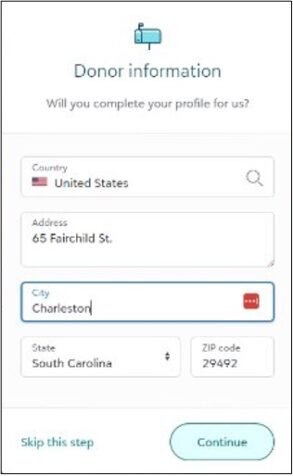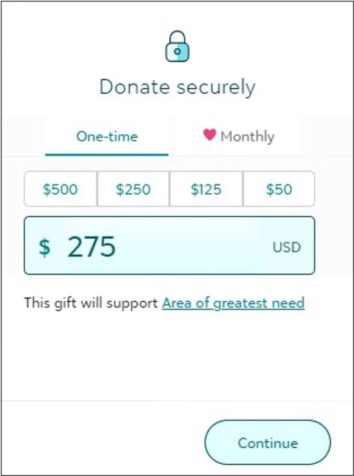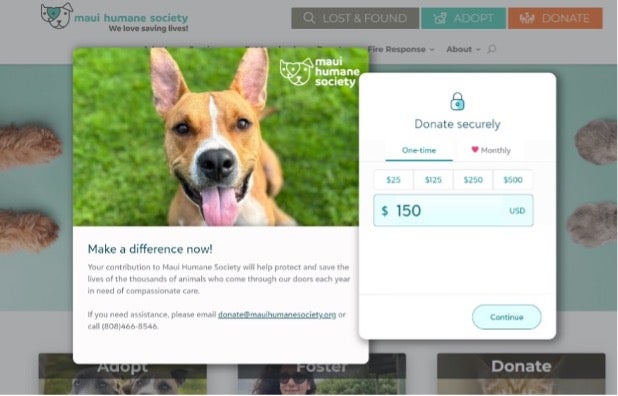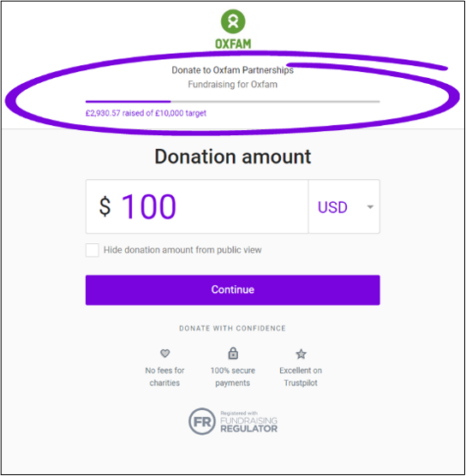Try A/B Testing of Your Donation Form for the Optimal Giving Experience

An online donation form is one of the most powerful tools to support your fundraising efforts. Donors often prefer to give online and have high expectations for a modern experience that feels safe, secure, and clearly associated with the organization they are donating to. Whether you have one donation form or hundreds, you want each to encourage the highest conversion rate and gift amounts for your mission.
Why Is Finding the Optimal Donation Experience Important?
People have lower attention spans than ever before. In 2004, the average adult’s attention span on a screen was two and a half minutes. Recently, it has dropped to 47 seconds. Any negative interaction or perceived annoyance on your donation page can cause a donor to lose focus and abandon a donation, even halfway through the process.
How Do I Use A/B Testing to Optimize My Donation Form?
The best approach to improving your donation form is to test and see what works, making small changes to achieve your goals. A/B testing sounds more complicated than it is. It’s simply comparing two versions of a donation form to find which is most effective. Some donation software, like Blackbaud’s Optimized Form, can do this for you, but you also can run your own tests to find results specific to your organization.
You can do optimization testing for how you’re getting donors to your donation form or on elements of the form itself. Before testing, know your baseline metrics—average gift amounts and your form’s conversion rate.
The A/B Testing Process
This process involves four key steps: building a hypothesis, creating a design, testing the hypothesis, and analyzing the data.
- Build a hypothesis: Optimization begins with a hypothesis. Identify an aspect of the donation form that can be improved. Your hypothesis should be a clear and testable statement outlining what you expect to achieve through optimization. For example, “By simplifying our checkout process, we will increase conversion rates by 4%.”
- Create a design to test your hypothesis: Once you have a well-defined hypothesis, design your changes or improvements, considering factors like user experience, design elements, and functionality enhancements. This step ensures that your optimization efforts are focused and intentional.
- Implement and run your A/B test: When your test design is ready, implement it in your software. If you’re running a manual test, create two versions of your donation form with the designed change implemented only on one. Run your test by splitting an email appeal into two segments and sending each segment one of the forms. If you’re using an A/B testing tool, implement the variant within one form and use the optimization software to perform the test.
- Analyze the data: After the test is complete, gather and analyze the data. Use your form data, A/B testing tools, user feedback, or other methods to compare the performance of the original against the optimized versions. Look for patterns and trends to determine whether your hypothesis was correct and whether the optimization had the desired impact. This helps draw meaningful insights so you can make data-driven decisions for additional optimization efforts in the future.
- Rinse and repeat with your next hypothesis: Whether your hypothesis held true or not, A/B testing is never done. You’re changing the user interface for your donors one design tweak at a time. If your test won, great! Test again with a slightly different variant to see if you can get an even better result. If the results aren’t great, don’t give up—go back to the drawing board, design another test, and keep going until you achieve the desired outcome.
Where Do I Start?
Here are some common areas that can impact donor conversions and average gift amounts on donation forms:
- Number of fields on the form: Does removing some fields or making them optional help with donor conversion? Test by removing or making one field at a time optional to find the optimal presence of fields.

- Ask ladder: Does increasing your standard ask ladder amounts by 10% affect donor conversion or average gift amount? Does ascending or descending order make a difference?

- Messaging and branding elements: Find the right message, visual identity, and call-to-action to encourage your donors to take action and donate, thus increasing your conversion rates.

- Interactive visual elements: Does adding a totalizer encourage more people to give? Or to give more?

By systematically testing and refining different elements, you can identify what works best for your target audience and continuously improve your fundraising efforts. Remember, optimization is an ongoing process, and each test brings you closer to achieving your goals. Start with small changes, analyze the results, and keep iterating to create the most effective donation forms for your mission.
Free Resource
Major Giving with Blackbaud Raiser’s Edge NXT®: A Lookbook for Fundraisers

